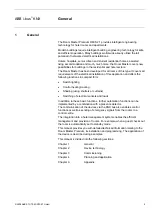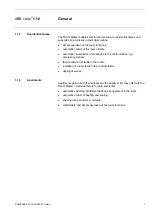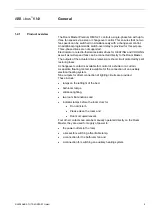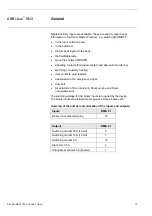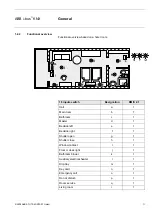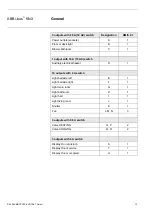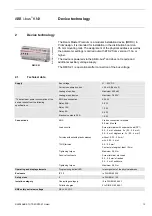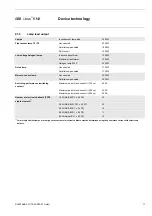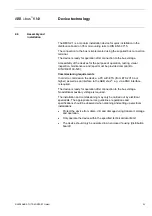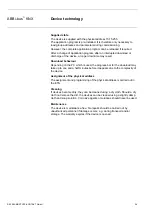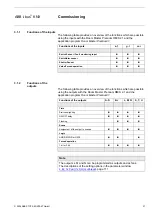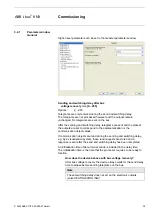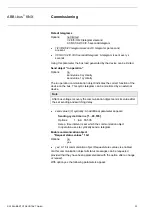
ABB i-bus
®
KNX
Device technology
© 2008 ABB STOTZ-KONTAKT GmbH
19
2.1.7
Lamp load output
Lamps
Incandescent lamp load
3680 W
Fluorescent lamp T5 / T8
Uncorrected
Parallel compensated
DUO circuit
3680 W
2500 W
3680 W
Low-voltage halogen lamps
Inductive transformer
Electronic transformer
2000 W
2500 W
Halogen lamp 230 V
3680 W
Dulux lamp
Uncorrected
Parallel compensated
3680 W
3000 W
Mercury-vapour lamp
Uncorrected
Parallel compensated
3680 W
3680 W
Switching performance (switching
contact)
Maximum peak inrush-current I
P
(150
μ
s) 600
A
Maximum peak inrush-current I
P
(250
μ
s) 480
A
Maximum peak inrush-current I
P
(600
μ
s) 300
A
Number of electronic ballasts (T5/T8,
single element)
1)
18 W (ABB EVG 1 x 58 CF)
26
2)
24 W (ABB EVG-T5 1 x 24 CY)
26
2)
36 W (ABB EVG 1 x 36 CF)
22
58 W (ABB EVG 1 x 58 CF)
12
2)
80 W (Helvar EL 1 x 80 SC)
10
2)
1)
For multiple element lamps or other types the number of electronic ballasts must be determined using the peak inrush current of the electronic
ballasts.
2)
Limited by protection with B16 automatic circuit-breakers.
Application program
Maximum number of
communication objects
Maximum number of group
addresses
Maximum number of
associations
Room Master, Premium/1
255
255
255
Note
The programming requires EIB Software Tool ETS2 V1.3a or higher.
If ETS3 is used a
*
.VD3
or higher
type file must be imported.
The application program is available in the ETS2/ETS3 at ABB/Room
automation, Room Master, Premium.
The device does not support the closing function of a project or the KNX
device in the ETS. If you inhibit access to all devices of the project with a
BCU code
(ETS3), it has no effect on this device. Data can still be read
and programmed.

